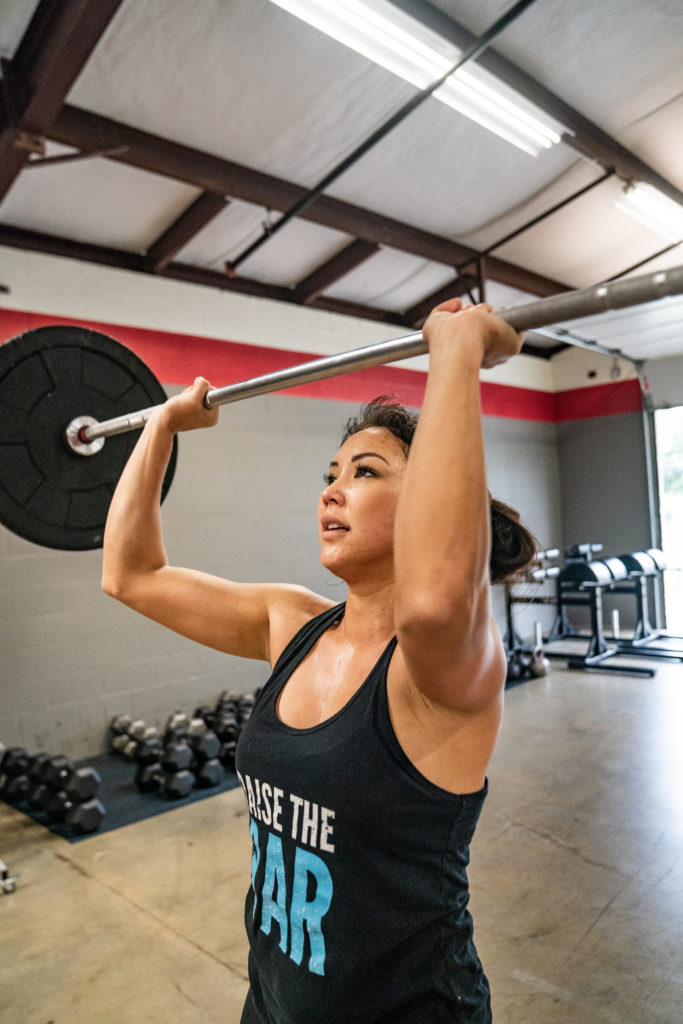In class you may have heard your coach use the term “hypertrophy” to describe the goal of the days training session. In today’s blog we are going to define this term and better help you understand the goal and the why behind your training.
The definition of hypertrophy is “the enlargement of an organ or tissue from the increase in size of its cells.” There are many types of hypertrophy that can occur in the human body but when it comes to training, we are particularly talking about muscular hypertrophy. Essentially muscular hypertrophy just means that the muscle fibers get larger. So why do we want to increase the size of our lean tissue? Well, because building muscle is important for nearly every goal whether it be losing body fat, moving pain free or living longer, building lean muscle tissue should be the primary goal.
Below are three mechanisms that we use in our training to drive muscle hypertrophy:
1. Muscle Tension. By creating peak tension in our muscles we are creating a hypertrophic response and stimulating muscle growth. We can do this in a variety or ways but the most common method to achieve peak muscle tension is to lift heavy. Any load that is 80% or above our 1RM will create an ideal hypertrophic response. While lifting heavy weight is the most popular method, we can also achieve muscle tension through the use of bands (aka accommodating resistance). Bands are a great tool to add to our lifts to increase load in a safer way without adding straight weight. Think banded deadlifts and banded presses. We can also achieve muscle tension through frequency and duration. For example 10 sets of 3 reps with 2:00 rest between or even negatives where we are moving slowly to create more time under tension during the eccentric (lowering) phase of the movement. Think pull up negatives with a 5 second lowering. All of these examples help create peak muscle tension.
2. Metabolic Stress. Another mechanism we use to increase lean muscle tissue is metabolic stress. Metabolic stress is essentially a lack of oxygen in the muscles which results in cellular swelling. This can also be referred to as “the pump”. Think of the feeling in your legs you get when you sprint on the assault bike for 30 seconds and your quads feel like they are going to explode. That is metabolic stress. We also can achieve metabolic stress by performing higher repetitions at lighter weights to maximal effort. Sets of 6-12 smooth reps are usually perfect to help create a hypertrophic response in muscle tissue and we use these in both strength sessions and conditioning type work. We can also use single bands for movements like banded press downs, hammer curls, face pulls etc. and if you perform a set of 30-50 reps of any of these movements, you will certainly feel cellular swelling take place as a result of metabolic stress.
3. Muscle Damage. Now this may sound scary and like its a bad thing, but every time you train you are essentially damaging your muscle tissue and creating little tiny tears in the muscle tissue. The magic happens when your body begins the recovery process and starts repairing those micro tears and remodeling the muscle tissue to come back bigger and stronger than it was before. This is how muscle is built and this is how we get stronger. We’ve all felt muscle damage before as it is commonly referred to as DOMS (Delayed Onset Muscle Soreness). This is why your muscles feel sore 24-48 hours after a training session. You have tiny micro tears in your muscles and your body is rebuilding them to come back bigger and stronger than before. This is why recovery, rest, and proper nutrition are so vital to achieving the results you want and allowing your body to rebuild.
I believe it is extremely important to understand the “why” behind your training. If you can better understand the mechanisms which drive results, then you can train smarter, and never waste hours on the elliptical again. To quote Dr. John Russin, “You must have a clear cut why behind every exercise in your training program. If you can’t clearly determine why you are doing something, maybe you shouldn’t be doing it at all.” This is why we not only tell our members what to do and how to do it, but also why we are performing a certain exercise and how it is going to get them closer to their goals.
Now that you know what muscle hypertrophy is and the methods we use to build muscle, next week I’m going to talk to you about why you should care about building muscle no matter what your fitness goals. Stay tuned!





